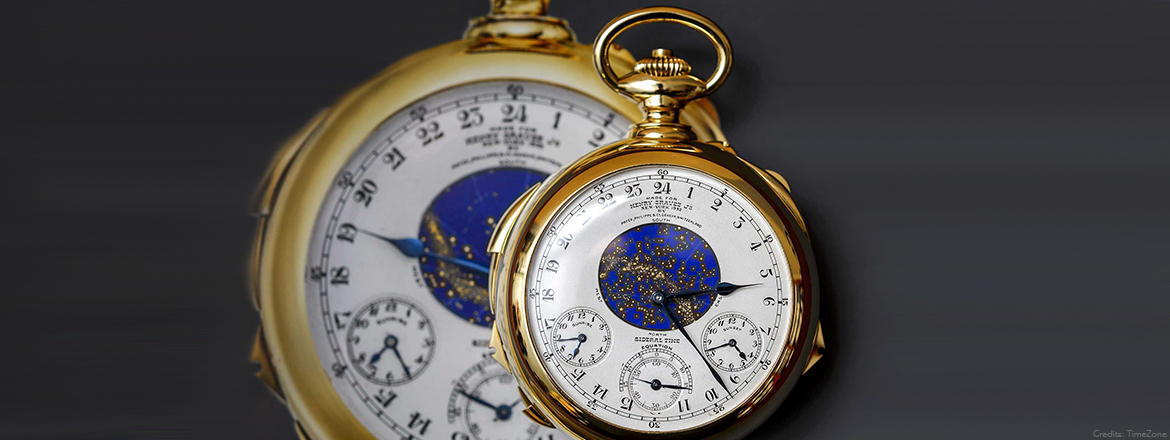News • 27 Nov 2014
Patek Philippe Pocket Watch Sold For World Record Making US$24 Million

THE HENRY GRAVES JR. SUPERCOMPLICATION, has sold at Sotheby’s, Geneva, for a record-breaking US$24 million (which includes the buyer’s premium).
With 24 complications, it has previously been styled as the most famous watch in the world, but it comes with a very human story attached and illustrates how the Swiss watch industry worked in the early 20th century.
Sotheby’s expected to sell the Henry Graves Jr. Supercomplication, one of the most famous watches in the world, for at least US$17 million. On November 11, the watch fetched US$24 million at auction. Michael Clerizo looks at why its worth so much.
The watch is the result of a competition between two phenomenally wealthy men: Henry Graves, a New York banker, and James Ward Packard, a car manufacturer from Warren, Ohio. Both loved watches and engaged in a gentlemanly contest to determine who could commission the most complicated Patek Philippe watch. (A “complication” is any function on a watch other than telling the time of day, such as a calendar, chronograph, minute repeater, and so on.)
In 1916, Packard was ahead with a 16-complication pocket watch. In 1925, Graves countered by challenging Patek Philippe to create a watch with 24 complications—the most complicated watch ever produced until that point, which the Swiss company delivered to Graves’s Fifth Avenue home in January 1933.
However, the competition had ended sadly almost five years earlier, on March 20, 1928, when Packard died. Had Packard devised a plan for besting his rival? We will never know. What we do know is that Graves grew unhappy with the attention the watch attracted and feared that his grandchildren might be kidnapped and held for ransom. He considered throwing the watch in a lake. Fortunately, his daughter Gwendolen, convinced him to hold on to the Supercomplication and it remained in the family until 1969.
The dials on the Supercomplication bear the name Patek Philippe but that doesn’t mean the watch was designed and built in the company’s Geneva workshops. In 1925, producing the watch was beyond the capabilities of any one enterprise. Historically, Geneva-based watch brands outsourced (to use a contemporary term) devising and producing complications to specialist companies in the Swiss watchmaking heartland of le Vallée de Joux, an often snow-clad region about 30 miles north of the city
In Geneva the complications were added to the base movement, and cased. The Sotheby’s catalog records nine workshops involved in manufacturing the Supercomplication, including one for project management, one for the case, and another for the winding mechanism.
The name of the company that produced the dials, Stern Frères, adds another twist in the story of the Supercomplication. The Stern brothers, Charles and Jean, purchased Patek Philippe in 1929.
This article was first published in Wall Street Journal Online on 11 November.
For more information, please speak with our Sales Consultant here or visit us at any one of our boutiques.











